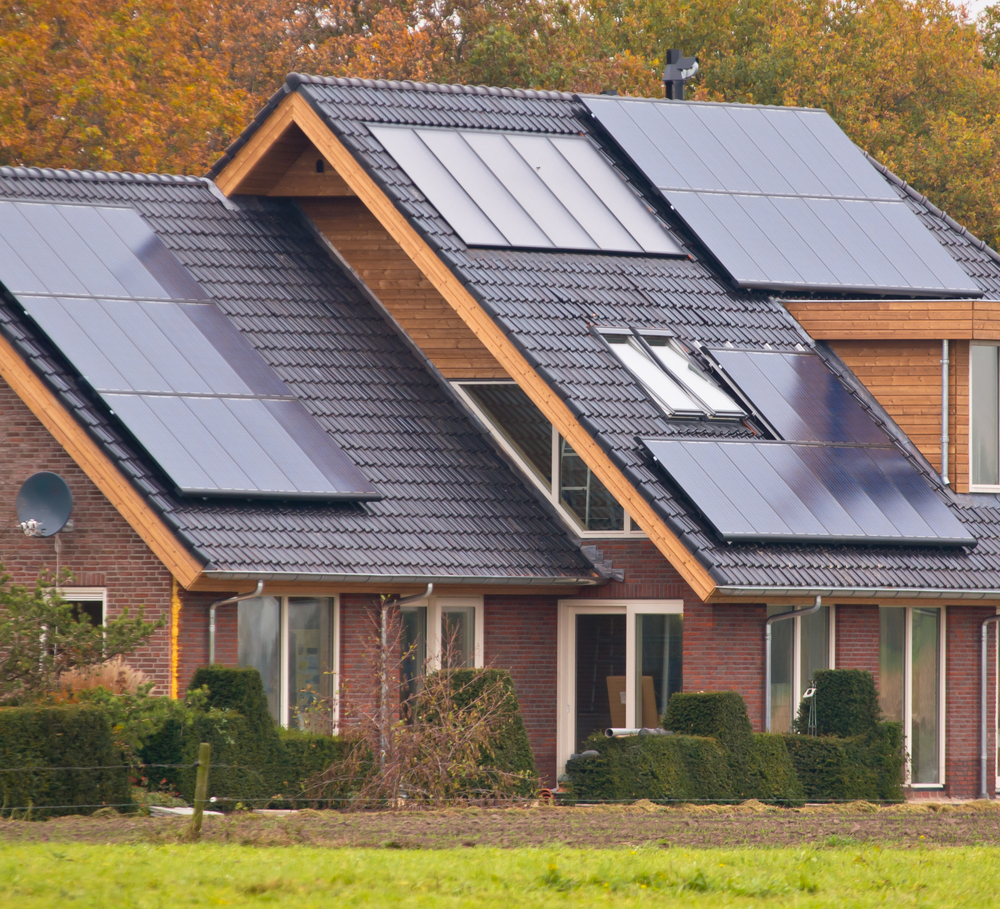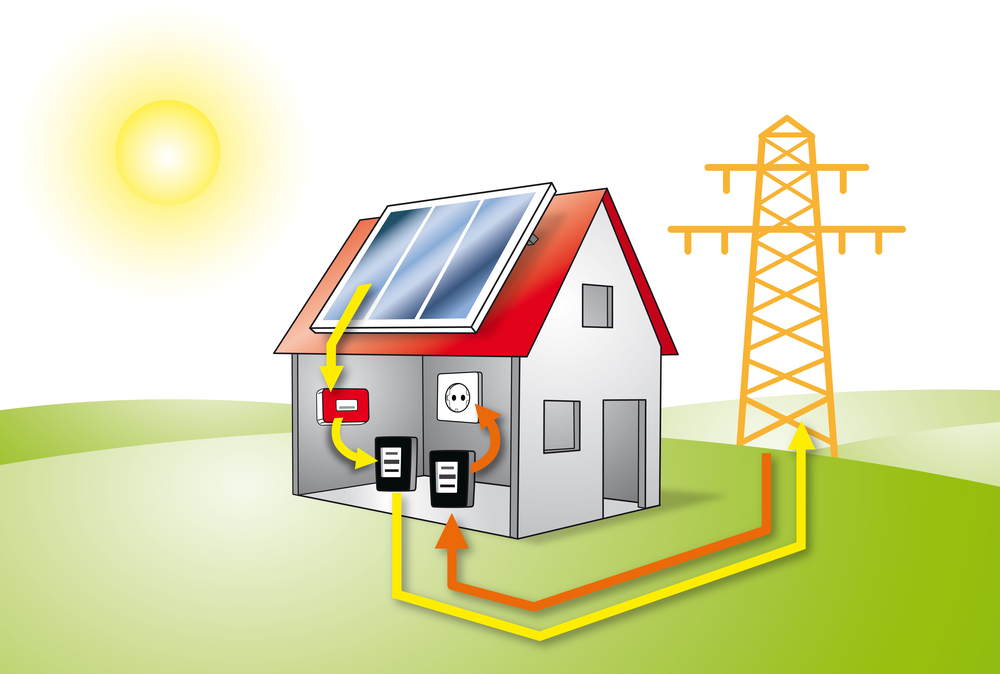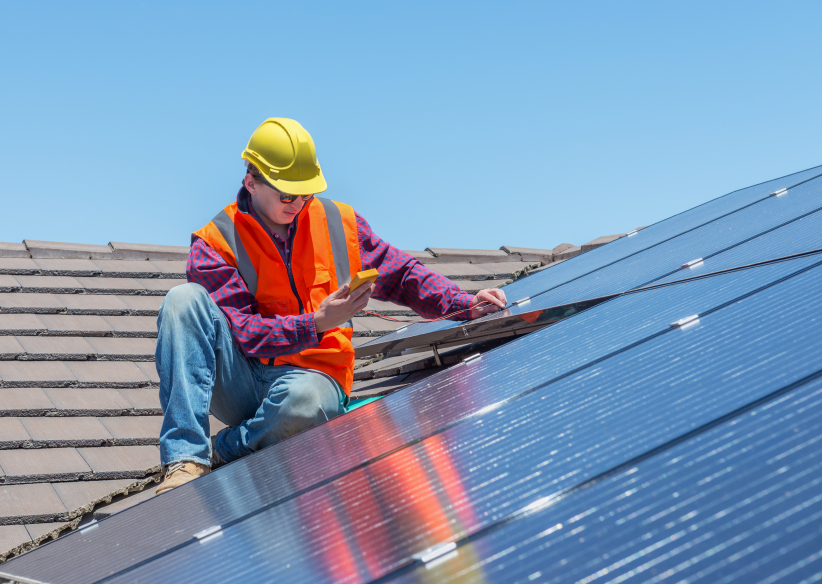Install Solar Panels
Did you know, a home solar system saves on average $50,000 or more over the life of the system? Imagine - no more electricity bill! If you own your home and it has good sun exposure and a sturdy roof, you could save money and generate your own clean, renewable electricity with solar panels. Solar has so many benefits! It provides the independence of generating your own power, reduces air and climate pollution, saves money, earns a great return on investment, and even increases the value of your home. Going solar also helps to protect against future electricity price increases and supports local jobs. So it’s no surprise there are over 2.5 million home solar systems in the U.S.! And the cost of solar panels has come down dramatically in the past few years. There are also many financing options - and you start saving money on day one!
Your Impact
Action Steps & Tips
Introduction

Adding solar to your home is a great way to have the independence of generating your own clean renewable power, save money on your electricity, earn a great return on investment, reduce climate pollution and increase the value of your home. Going solar also helps to protect against future electricity price increases and supports local jobs. It’s a win all around — so it’s no surprise that over 2.5 million homeowners have installed solar systems in the U.S.!
Have you thought about solar, but thought it would be too expensive? That might not be the case. The cost of solar panels has come down so dramatically in the past few years that it is now more affordable in many areas of the U.S. And you start saving money on day one.
Home solar systems:
-
Save money: immediate saving on your electricity bill plus lifetime savings from $30,000 to $100,000 or more depending on where you live (based on 25 year system life).
-
Are more affordable with lower prices: The average cost of an 8 kW solar system is around $20,500.
-
Increase the value of your home: according to Zillow, solar panels add a 4% value increase on average
-
Reduce climate and air pollution: on average reduce 10-25% of household climate pollution. If you add electric home heating and an EV you reduce even more — up to 70% or more of household climate pollution!
-
Provides control and independence for your home energy use
-
Support local jobs
11. Find out if solar panels can work for you
A few simple questions will tell you if solar can work for you:
- Do you own your home?
- Do you have good sun exposure on your roof?
- Is your roof in good condition?
If the answer to all of these is yes, you’re all set to explore solar options. If you have a lot of trees or are unsure of your sun exposure, you can use Google’s Sunroof tool to do a quick check. Just type in your address and it will show you an aerial view of your rooftop with the solar generating potential. If you enter your average electricity bill, the tool also provides some basic estimates on the best system size and 20 years savings.
22. Find an installer
If it looks like your house may be eligible for solar, the next step is to find an installer to get a complete assessment and help you through the process. They will help verify the results on Google Sunroof, identify whether your roof requires any repairs before installation, and help you choose your system size and other options. They can often even help with financing options.
Finding an installer. To find an installer, you can check online for local companies or get help through a non-profit program like EnergySage. EnergySage is a great resource to help you find installers as well as help at every step of the way through the process. Get support for finding multiple quotes, reviewing installers, calculating savings, reviewing financing options and more.
Here are a few things to consider when deciding on a solar company:
Get multiple quotes. Getting 3 quotes will ensure you the best price.
Choose an experienced installer. Experience matters. Check for a valid license, online reviews, and references before deciding. Ask how long they have been in business and how many systems they have installed. Do they have experience working with your utility company and getting permits in your city? Find out what warranties they provide. Does the warranty cover your roof? Do they provide a performance guarantee on the panel output (power produced)? Do they take care of the building permits and all the paperwork?
Schedule a site visit. Once you choose an installer, the next step is a site visit to go over system options and confirm the quote. During that visit, they will measure your roof, conduct a shade analysis, and answer any questions about the equipment they are recommending. Make sure to ask them to do a roof inspection as well and let you know if you need any repairs before installation.
This is a big decision. Ask lots of questions and don’t be pressured! Reputable installers should not pressure you to sign a contract during your site visit. Review the information below to help you get up to speed on the important points so you can ask good questions during your site visit.
33. System size, batteries and getting paid for extra electricity
The size of your solar system will depend on how much energy you use, your sun exposure and the size of your roof. Generally, the best option is to install enough solar to cover 100% of your electricity use. However, if you have shade, a small roof or other site restrictions, you may need to install a smaller system.
Do a quick check on Google Sunroof. To get a basic idea, if you haven’t done this yet, start with a quick check on Google’s Project Sunroof tool. The tool computes how much generating capacity you need based on how much energy you use, your sun exposure, and how many panels can fit on your roof. Your solar installer can do more exact measurements and confirm the best size for your system.
Plan for the future energy. If you are planning to purchase an electric car or switch from gas to electric heat pump heating, your electricity use will increase in the future! Factor this into your system size. Both of these upgrades are highly recommended with home solar as you can save a lot of money powering your car and home heating from your solar panels. Your solar installer can help you with the calculations to factor in future upgrades. Be sure to discuss all of your possible future energy needs with your installer when sizing your system. Here are a few tips:
- Energy efficiency upgrades. If you complete energy efficiency upgrades like weatherization, insulation, installing more efficient appliances, smart lighting, and power strips before you install your solar system, this will lower the size and cost of your system.
- Adding an electric car. If you’re planning to get an electric car, increase your system by around 2 kilowatts. The savings from powering your car with home solar will far outweigh the extra upfront cost!
- Switching to electric heat pump heating. Replacing a gas, propane or fuel oil furnace or water heater with an electric heat pump unit will increase electricity use and require a slightly larger system.
Average system sizes. Solar panel system sizes vary. An average system in the U.S. is 8 kW based on average U.S. electricity use of 900 kWh/month, an average amount of sunlight and a system to cover 100% of annual electricity use. However, monthly electricity use varies widely from just over 500 kWh/month on average in Hawaii and California to over 1,100 kWh/month in Louisiana, Tennessee and Alabama. So based on where you live, system sizes will vary from around 5kW - 12kW or more.
Adding a battery. Including a backup battery to your solar system provides a great way to have backup power in the event of a power outage. A backup battery can also help you store your extra solar energy from when the sun is shining to use at night. Batteries are still expensive, but prices are coming down. Talk with your installer about the pros and cons of adding a battery for your system. If you decide to add batteries, look into including islanding capabilities where you can continue to use your solar panels during a power outage. If your panels are tied to the grid, they are shut down for safety reasons during a power outage.
Connecting your solar system to the electricity grid. Most homes get electricity from a utility company through the local electricity grid (as opposed to being in a remote area with no utility company connections). If you have an electric utility account, you likely have the option to connect your home solar system to the electricity grid. This provides you the option to use electricity from the grid at night if needed and send extra energy from your solar panels into the grid during the day for others to use. This provides the flexibility of not relying on your panels for all your energy. The other option is to increase the size of your solar system and add a battery backup system to operate independently.
Getting paid for extra electricity. If you tie your home solar system into the electricity grid and send extra electricity into the grid for others to use, you can usually get paid for the electricity you send. The utility company tracks the amount of energy you send and pull from the grid through your electricity meter. This is called net metering or net billing. How much you get paid for the energy you send into the grid varies depending on your state policies. Most states still pay retail rates, but some states are now paying less. Check with your installer or utility company to learn more about the rates in your state.
It's important to discuss rates with your installer, as your state's policy can have a huge impact on your savings and the value of your home solar system. Although most states pay retail prices now, there is a trend to move towards wholesale rates in some areas. Wholesale rates can be up to 10 times lower than retail rates which significantly extends the payback time on your system if you don’t have a battery backup. If your state is considering lowering home solar payment rates, it is worth it to get your system installed before this happens if possible. This is a bit complicated and best discussed with your installer! However, it is an important concept to understand as a solar owner.
44. Cost, savings, incentives and financing options
The cost of solar has dropped drastically in the last 10 years. Lower prices, incentives, and new finance and lease options have made solar more affordable for many homes in the U.S.
Average system cost. The cost of your solar system will depend on the size of the system and any credits or rebates. An average system size of 8 kW is around $20,500. However, costs vary significantly depending on the size of the system you need and where you live, ranging from $15,000 - $35,000.
Tax credits and rebates. The 30% federal tax credit that was available through 2032, now ends in 2025. However, there are many state and local programs that provide rebates and incentives. Check in the resources section below or at EnergySage to find state and local program information. Low-income programs that help lower the cost of systems and installation are available in some areas.
Lifetime Savings. Average savings over 25 years range from $30,000-$100,000+ with $50,000 on average for an 8 kW system. Savings vary based on where you live from an average of $30,000 in Washington and $95,000 in Massachusetts. (Average savings = electricity bill savings minus system cost after incentives and does not factor in financing costs).
Financing options. There are three main financing options for your solar system: cash purchase, loan, and lease. Here’s how they each work:
Pay cash: Paying cash will result in the highest savings. Most systems pay for themselves within 5-10 years. After that, any electricity you generate is free! Since systems are good for 25 years or longer, that is a lot of free electricity!
Loans: Loan options have expanded with a new solar loan option. Loans are the second best option after paying cash. Loans allow you to own your panels and get the full financial benefit of the energy you generate.
- Home Equity Loan or HELOC. This option is available if you already have a home equity loan or line of credit.
- Solar Loan. A number of companies now specialize in home solar loans. Many have $0 down, low-interest rate options. Find a list of solar loan lenders in your area at EnergySage or ask your installer for help.
- Check through the many loan options fpr term length, money down, interest rates and secured or unsecured. If you are planning to do multiple projects, including adding home insulation or upgrading appliances, see if you can do this under one loan.
- PACE (Property Assessed Clean Energy) loans are a special option where you pay back the loan through your property taxes with a once a year payment. PACE financing is available in some areas. PACE loans are not dependent on your credit score, but the value of your home.
Lease or power purchase agreement (PPA): You rent your solar system with leases and PPAs. The installer will own the panels and charge you a monthly fee to use them, which will be less than your current electricity bill by on average 10-30%. The installer will also be responsible for any maintenance or repairs. There is no upfront cost required and no need to get financing. You often have the option to purchase the system at the end of the lease.
However, since you don’t own the panels, you are not eligible for the tax credits or any other incentives. With a lease or PPA option you will save far less money than with a loan or cash purchase. However, if system ownership is not an option, this is a great way to choose home solar! Be sure to check out the company who will own and install your panels to make sure they will be responsible and maintain them.
5 5. Install, flip the switch on your panels, and celebrate!
Congratulations! Your new solar system is saving you money and creating clean energy to help to protect our future!
Maintenance requirements are minimal. Most solar companies will monitor your energy production and provide you with tools to watch your production through an online program or app. They should also flag any issues for you, such as replacing any parts if needed during warranty periods. Some companies guarantee minimum power generation levels and reimburse for any under-performance.
Celebrate! Sit back and enjoy the quiet, clean power being generated on your rooftop every day!


